| The Edén Mine was once one of Mexico's richest silver mines. The Spaniards enslaved the indigenous population and up to five
people a day died in the mine at the peak of its production, including many children The
visit starts with a 500 metre train journey into the hillside. Then there is a
museum of mineral samples. This is one of the stranger ones. | 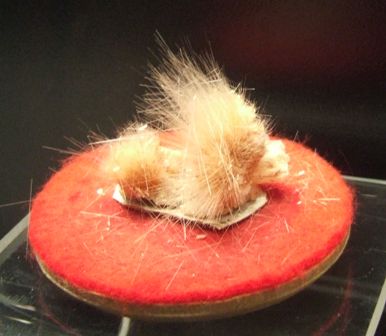 |
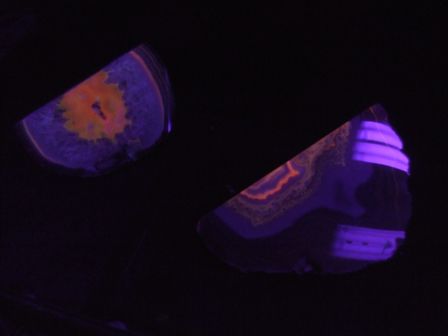 |
Above left is danburita from the La Aurora mine in Mexico. Above right is
pirita from Concepción del Oro,
Zacatecas. The minerals, left, fluoresce under UV light. |
| Besides the minerals, examples of fossils are also on
display. | 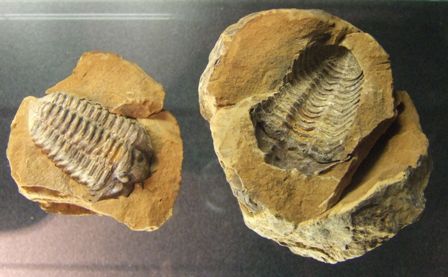 |
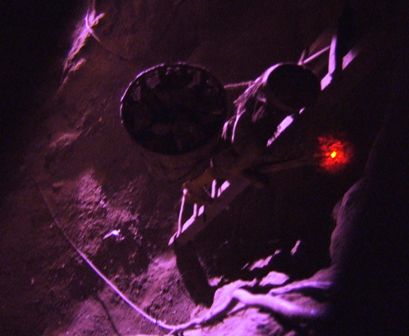 |
The mine must have been a really murky place as men and boys climbed rough
wooden ladders with huge baskets of ore under conditions of very little
light. |
| Flash creates a totally artificial picture but helps
to demonstrate the task. We were told that this particular ladder is
original. | 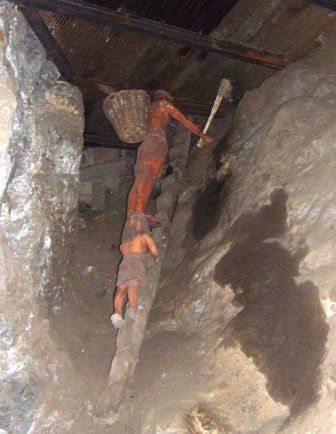 |
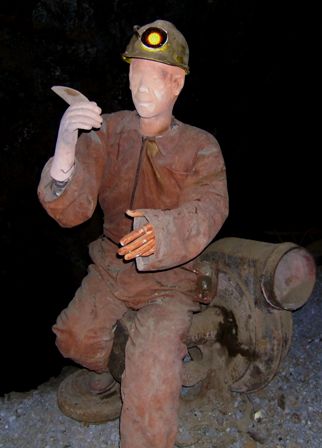 |
There are numerous mannequins on display illustrating the whole period when
mining was taking place. |
| It must also have been very smoky since electric
lights were not available. Although a number of the figures wore big Mexican
sombreros I find it hard to imagine that they wore them underground. | 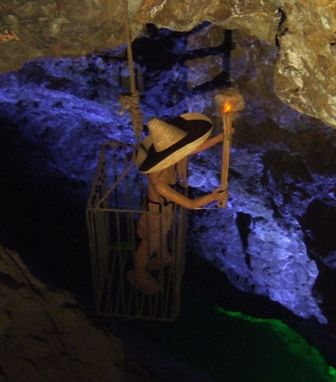 |
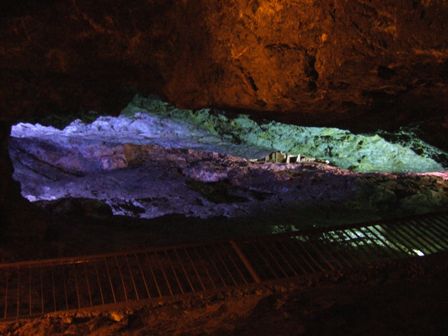 |
The lighting effects are very colourful. Our guide unfortunately (for me)
only spoke Spanish but the rest of the tour party enjoyed his dry humour. |
| I guess this was meant to show that women worked down
the mines too but most Mexicans are really dark haired. It looks slightly
artificial to me. | 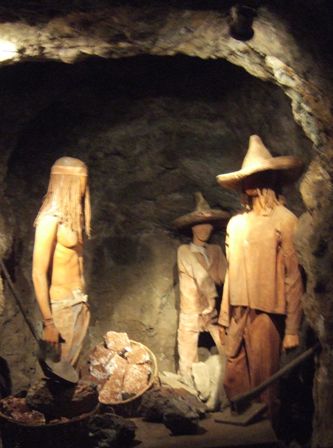 |
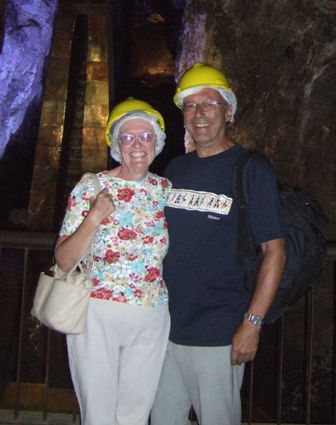 |
We enjoyed it though despite keeping banging my head. |
| We went up in the lift and came out at an alternate
entrance a couple of hundred feet higher. After being extracted, the
ore would have been crushed with a roller like this one. | 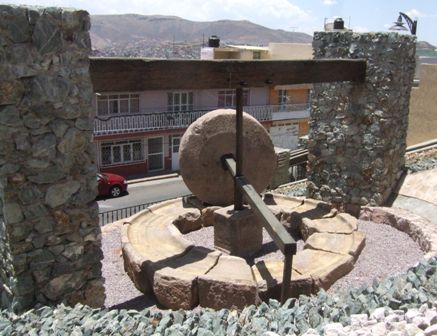 |
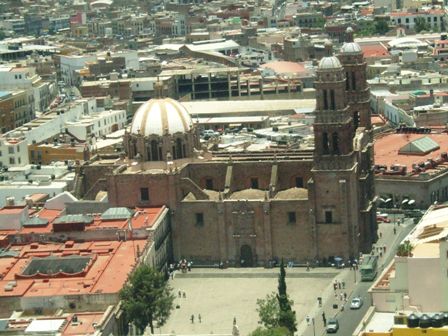 |
Coming out at the upper entrance left us only 100 metres away from the teleférico,
the cable car which is suspended above the city and takes you up to Cerro de
la Bufa. This is an old Basque word for wineskin which is what the hill
looks like. However first you have to cross over the city with the
cathedral down below. |
| The cars are not very big and run every 15 min. We
were the only paying occupants. The guide pointed out points of interest in
the city. | 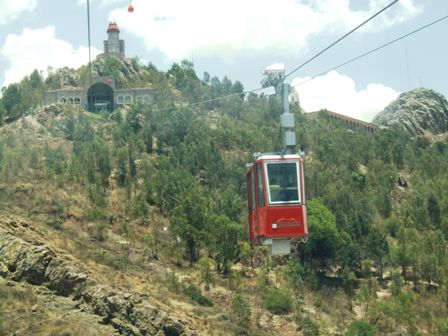 |
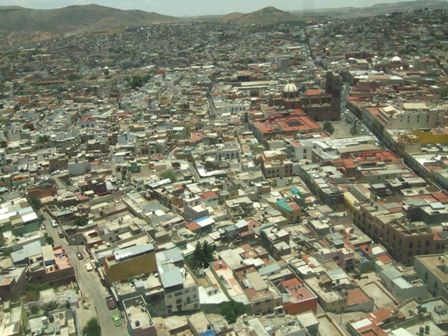 |
It really is quite a spectacular ride. |
| This is the 16th century Convent de San Franciso which
houses the Museo Rafael Coronel of which more on the next page. | 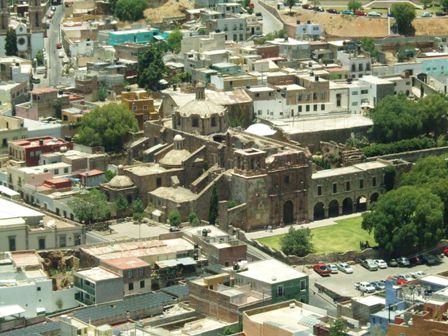 |
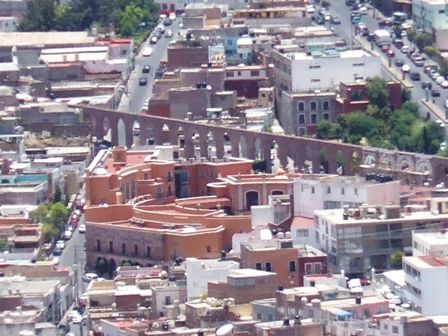 |
Looking well to the north we can see the aqueduct, with the bull ring/hotel
in the circular structure in front, which we saw yesterday. This is one of
the best views of it. |
| Up on the top of La Bufa is the Temple of Nuestra
Senora del Patrocino who is the patron saint of the town and of the miners.
It has been rebuilt several times since the mines were discovered in 1546. | 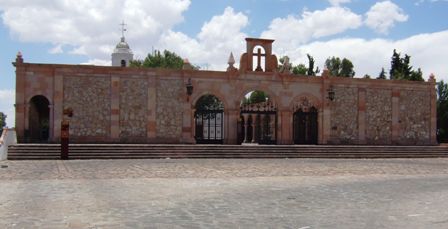 |
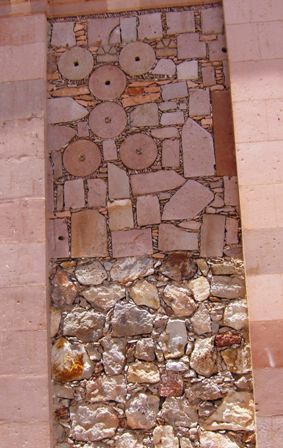 |
Some of the stonework is interesting where they have reused bits from the
old buildings. |
| The chapel houses the oldest sculpture of the Virgin
Mary in the city dating back to the 16th century. | 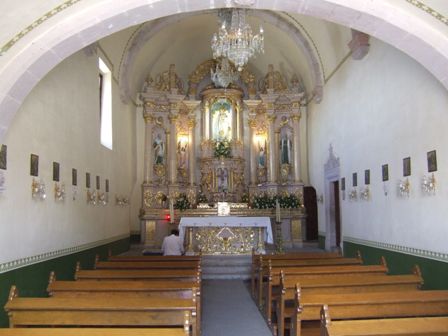 |
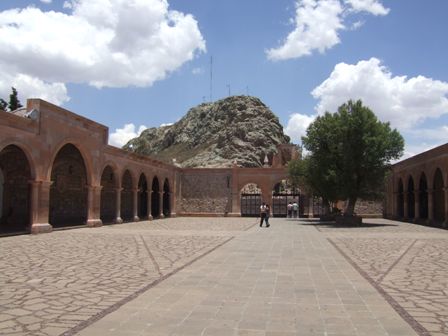 |
The Cerro de la Bufa which is the highest point. Thousands of pilgrims walk
up here every year on September 8th when the Virgin is carried down to the
cathedral. |
| A Huichol Indian woman working on her embroidery while
waiting for customers for her wares. | 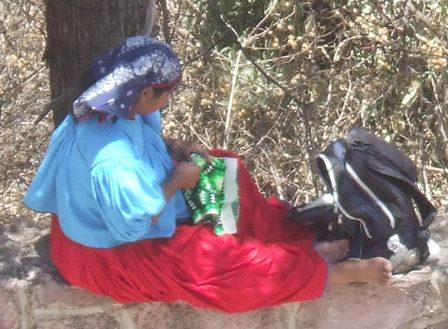 |
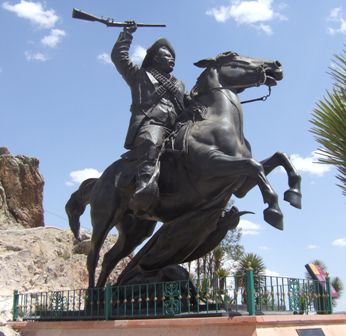 |
There is a square and a small museum celebrating the revolution along with
three mounted statues of generals. This one is Francisco (Pancho) Villa. The
three were the victors of the battle of Zacatecas. |
|